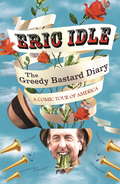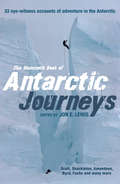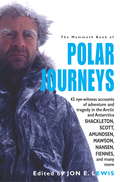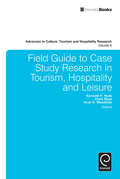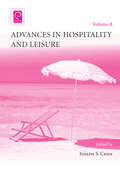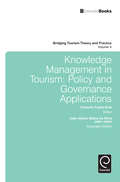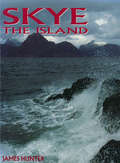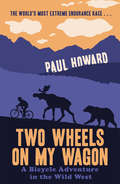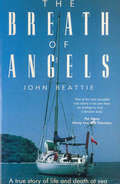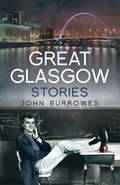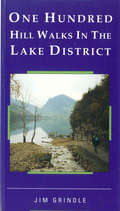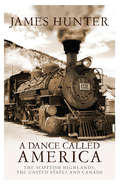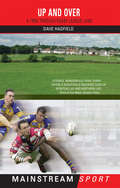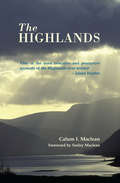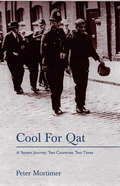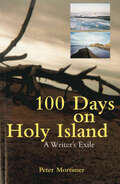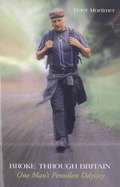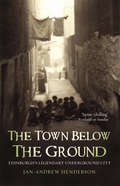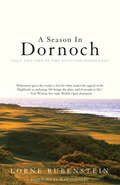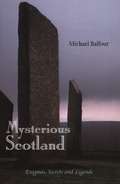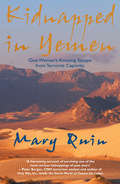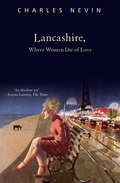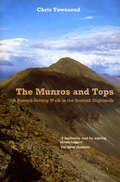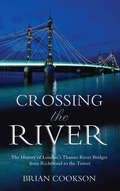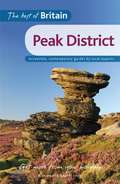- Table View
- List View
The Greedy Bastard Diary: A Comic Tour of America
by Eric IdleEric Idle, the legendary star of Monty Python fame, takes fans on a deeply personal and hilarious whirlwind tour around America.'I still feel somewhat nervous encroaching on the Palin territory of writing a travel diary based on a journey ... though it is true, I reason, that all the Pythons have been involved in documentaries. So this must be a Python thing. What is this urge to probe and examine by ex-comedians? Are they tired of dressing up as women? Surely not.' - Eric IdleThe man who brought you the anthems 'Always Look on the Bright Side of Life' and 'Sit on my Face' shows his naughty bits - and much more! As he crossed the US on The Greedy Bastard Tour, Eric Idle kept a diary on the Monty Python website updating fans with his experiences, insights and observations. Inspired by those blogs, THE GREEDY BASTARD DIARY is an honest, hysterical and moving book - part travelogue, part memoir - that chronicles those 80 days on the road, offering Idle's thoughts on his career, personal life and the country he now calls his home. Reflective, ironic, and stamped with his renowned wit, this illuminating work takes readers on a personal tour with the legendary star and offers an intimate, close-up look inside the man as never before.
The Mammoth Book of Antarctic Journeys: 32 eye-witness accounts of adventure in the Antarctic (Mammoth Books)
by Jon E. LewisThe very best writing on the Antarctic, from James Cook's eighteenth-century assertion that 'no man will ever venture further than I have done' to Lynne Cox's description of her epic, icy swim in the twenty-first century - 32 first-hand accounts of men and women challenging one of the Earth's last true wildernesses. Here you will find both legendary tales of heroism and startling contemporary accounts of the impact of global warming on the Earth's sole undeveloped continent, including: 'Dog Days' by Robert Falcon Scott 'The Loss of the Endurance' by Ernest Shackleton.'Alone' by Richard E Byrd.'The Killer under the Water' by Gareth Wood.'Melting Point' by David Helvarg.'Swimming to Antarctica' by Lynne Cox.
The Mammoth Book of Polar Journeys: 50 Eye-witness Accounts Of Adventure And Tragedy In The Artic And Antartica (Mammoth Books)
by Jon E. LewisExerting a magnetic pull our imaginations, the poles have been the object of many gripping first-hand accounts of exploration - literally, journeys to the ends of the earthA passport to the last wildnernesses of Earth, this is the definitive collection of first-hand accounts of polar exploration - 50 true stories of intrepid travel through the desolate and dangerous regions of both Arctic and Antarctic. Beginning with Sir John Franklin's starvation trek through Alaska in 1821 and ending with Vassilli Gorshkovsky's northern expedition aboard a creaking ice-breaker in 2005, these true stories encompass every kind of triumph and disaster.The inspired but doomed courage of Captain Scott, and the marvellous leadership of Shackleton are well known, but here are many other stories including: The Bear, by Frederick A. Cook, 1908 Meeting with Polar Eskimos by Knud Rasmussen, 1932 By Dog-Sledge to the Top of the World, by Wally Herbert, 1968 Hell on Earth by Reinhold Messner, 1989-90 Solo by Pen Haddow, 2003And many more.
Field Guide to Case Study Research in Tourism, Hospitality and Leisure (Advances in Culture, Tourism and Hospitality Research #6)
by Kenneth F. Hyde Chris Ryan Arch G. WoodsideThis field guide provides methods and studies on how-to-do case study research in natural settings. A truly international guide, this text is ideal for those studying and conducting case study research in tourism, hospitality and leisure disciplines. It provides a comprehensive and practical account of how to describe, explain and predict both individual and group case behavior, at the same time explaining behavior among a set of cases relevant to a specific context. This guide embraces and extends Herbert Simon's (Nobel Prize in Economics recipient) insight that a decision results from the conjoining two antecedents in human behavior: cognitive processing of an individual or group and a given context or problem framing. Divided into six parts, this guide includes chapters on: analysis of texts; how-to-do executive interviews; field interviewing in international contexts; stakeholder participatory research; researching indigenous and marginal peoples; and cross-case analysis. The chapters increase skills and understanding of culture, tourism, and hospitality behavior through analysis of the four principle objectives of case study research: accomplishing accuracy; achieving generality; reporting complexity and broad coverage; and achieving impact for improving the individual condition, client, and/or society.
Advances in Hospitality and Leisure (Advances in Hospitality and Leisure #8)
by Jospeh S. ChenAssessment and outcomes evaluation have become increasingly important in librarianship. Although initially used in educational contexts to measure student learning, the strategy has migrated to other contexts such as hiring, employee development, overall organizational and institutional successes, measuring the outcomes of projects and operational changes, and self assessment at the personal level. This growing emphasis is partly due to increasingly stringent requirements that funds are used effectively to improve services and operations. The current economic climate and retrenchments in non-profit agencies, have raised the need for assessment and outcomes evaluation to a critical level. 'Contexts for Assessment and Outcome Evaluation in Librarianship' focuses not on the how of undertaking assessment and outcomes evaluation, but rather on their successes and failures in various contexts in which these tools have been and will be used.
Knowledge Management in Tourism: Policy and Governance Applications (Bridging Tourism Theory and Practice #4)
by Eduardo Fayos-Sola Joao Albino Silva Jafar Jafari Liping CaiSixty years after its birth, contemporary tourism is at crossroads. It has grown to become a key element of economic well-being, but it is threatened and threatening. Its enemies are congestion, destruction of natural and cultural environments, and social unrest. However, it also contributes its fair share to these evils. How can tourism really become a fulcrum for development and sustainability in the 21st century? This is a matter of crucial importance for entrepreneurs, governments, and civil society stakeholders, and Knowledge Management in Tourism: Policy and Governance Applications provides these key players with answers and queries, and above all with the strategic tools to understand and act. Knowledge Management in Tourism: Policy and Governance Applications is an indispensable instrument for everyone interested in the theory and practice of this very important human pursuit: the quest for effectiveness, efficiency, and equity of tourism activities in helping build the future of mankind.
Skye: The Island
by James HunterSkye, with its soaring peaks, sea-battered coastline and sometimes savage storms, is one of the most beautiful parts of Britain. To the people who live there, it is simply an t-eilean, the island, and it occupies an almost mythical place in the minds of many Scots. Written by a man who lives and works there, Skye: The Island marks a departure in books about the Scottish Highlands and Islands. Without sentimentalising or romanticising, it portrays Skye as it really is; evocative, moving, committed, passionate and hopeful, it is the best book you will read about the island.
Two Wheels on my Wagon: A Bicycle Adventure in the Wild West
by Paul HowardAs bicycle races go, the attractions of the Tour Divide are not immediately apparent. For a start, it is the longest mountain-bike race in the world, running nearly 3,000 miles down the Rockies from Canada to Mexico. But the distance is not the only challenge - the total ascent of 200,000 ft is the equivalent of scaling Mount Everest nearly seven times.Then there are the dangerous animals likely to be encountered on the route: grizzly bears, mountain lions and wolves, not to mention rattlesnakes and tarantulas. Worse, the rewards for all this effort are strictly limited. Unlike in the Tour de France, there is no fabled yellow jersey and no prize money.Yet, undaunted, and in spite of never having owned a mountain bike, Paul Howard signed up. Battling the worst weather for generations, drinking whiskey with a cowboy and singing karaoke with the locals, Howard's journey turned into more than just a race - it became the adventure of a lifetime.
The Breath Of Angels: A True Story Of Life And Death At Sea
by John BeattieIn 1992, John Beattie set out to sail around the world. Joined at times by an assortment of exotic characters - including a parrot called Hamish and the former Beirut hostage Brian Keenan - the joys and travails of his journey are depicted with complete honesty. But be it a storm at sea, a single-handed Atlantic crossing, or a near shipwreck in an uncharted jungle river, his humour and fortitude shine through. A compelling travelogue, a voyage of the spirit and a love story, The Breath of Angels is also a tale which might never have been told but for one chance-in-a-million encounter. Once day at dawn, a man lay dying of thirst in an open boat that had been swept out to sea - his partner had already died in his arms. In the gloom of the early morning light he sees a tiny fleck of white on the distant horizon. The Warrior Queen is homeward bound from Venezuela and the dying man has one last slender chance of life . . .
Great Glasgow Stories
by John BurrowesFew cities in the world abound with so many extraordinary stories as Glasgow. The city has been the silent witness to some of the most significant events of the past century, from major triumphs to cataclysmic calamities, and the best of these anecdotes are compiled here to form this unique collection.Amongst the notable events revisited are the launching of the Queen Mary, which captivated the city's inhabitants in 1934, the victorious 16-month work-in campaign by the Upper Clyde Shipbuilders in the early 1970s, the Ibrox disaster of 1971 and the plague that gripped the Gorbals in 1900.Some of Glasgow's most successful people are also covered, including Clydeside revolutionary John Maclean, founder of the Barras Maggie McIver and the inimitable Billy Connolly, whose humour and colourful personality are synonymous with the city.From the Battle of George Square to the bravery of the Glasgow people during the Blitz, Great Glasgow Stories provides an all-encompassing view of the city throughout the eras.
One Hundred Hill Walks in the Lake District
by Jim GrindleThis volume is a superb guide to the best walks in the Lake District, one of Britain's most popular areas for walking and climbing. Jim Grindle has brought together not only the most outstanding walks in Lakeland but also routes in tranquil places where you can escape from the crowds. Each of the one hundred walks features a specially drawn map, notes on features of historical and geographical interest, a detailed route description, full directions from the Lake District, hints on how to shorten walks and information on distances and OS grid references for starting points.
A Dance Called America: The Scottish Highlands, The United States and Canada
by James HunterA new dance is devised on the Isle of Skye in the eighteenth century. An exhilarating dance. A dance, one visitor reports, that 'the emigration from Skye has occasioned'. The visitor asks for the dance's name. 'They call it America,' he is told. Now James Hunter, one of Scotland's leading historians, provides the first comprehensive account of what happened to the thousands of people who, over the last 300 years, left Skye and other parts of the Scottish Highlands to make new lives in the United States and Canada.The product both of painstaking research and extensive travels in North America, this is the definitive story of the Highland impact on the New World, the story of how soldiers, explorers, guerrilla fighters, fur traders, lumberjacks and pioneer settlers from the north of Scotland found, on the other side of the Atlantic, freedoms and opportunities denied to them at home.
Up and Over: A Trek Through Rugby League Land
by Dave HadfieldAlong the way he met the people whose enthusiasm for the game has made it so durable - current and former internationals as well as others involved at all levels - as well as a few miserable old gits for balance. In this intimate account, Hadfield observes the way rugby league fits into the history and sociology of towns like Wigan and Castleford, with which it is synonymous. His record of the journey is in the great tradition of writers from Wordsworth to Laurie Lee, who found in long walks the perfect medium to explore and reflect upon their surroundings. Up and Over is the definitive book about the game and the local passions it engenders, as Hadfield seeks out the poignant and the humorous on a personal journey of discovery. For those who follow rugby league, it will give a unique perspective on the parts of the world they know intimately; for others it will be an introduction to a different world, seen via one of the elements that gives it its identity.
The Highlands
by Calum MacleanIn a new edition of this classic book, introduced by the world-renowned Gaelic poet Sorley Maclean, the late Calum I. Maclean, a Gaelic-speaking Highlander, interprets the traditional background, culture and ways of life of his native country. Calum's formal training in folk culture and the depth of his local knowledge make this book truly outstanding - it is written by a Highlander from the inside. Many books on the Highlands have been penned by outsiders with an uncritical appreciation of the scenery and only the most superficial knowledge of the Gaelic language and culture. By contrast, Maclean brought informed attitudes and sympathetic opinions. He was concerned not so much with places, beauty spots and scenery as with the Highlanders in their own self-created environment. He writes in terms of individuals and suggests reasons why Highland culture is unique in the world - it is something that, if lost, can never be recovered or recreated.
Cool for Qat: A Yemeni Journey: Two Countries, Two Times
by Peter MortimerWhen author Peter Mortimer was commissioned to write a play about a little-known riot between Yemeni and British seamen at Mill Dam, South Shields, in 1930, he decided to take the long trip to Yemen itself in search of inspiration. Undeterred by post-11 September government warnings against visiting this 'highly dangerous' area, Mortimer set off and found an extraordinary and surprisingly Anglophile country.Cool for Qat documents this remarkable journey, during which Mortimer pieces together how the riots of 1930 arose and considers their relevance to Western attitudes towards Muslims today. He meets many remarkable characters along the way and immerses himself in the national custom of chewing the narcotic qat leaf. After visiting the ex-British Protectorate of Aden - through which many of the seamen passed en route to Britain - Mortimer travels on to San'a and then Tai'iz. It is while visiting the isolated mountain villages surrounding this city that Mortimer finally meets men who worked in South Shields some 50 years ago. Carrying a battered book with images of Yemenis living in the North-east in the '30s from home to home, trying to jog distant memories, he realises his visit has taken on a new purpose - bringing a small part of the country's history back to where it belongs. Back in the UK, Mortimer's investigations into the 1930 riot reveal a society with many striking similarities to current times. Then, as now, Muslim immigrants were treated as scapegoats for all manner of ills, tabloid newspapers drummed up prejudice and hatred, and the powers that be often used fear and racial mistrust to disguise their own economic failings. Cool for Qat questions just how 'civilised' the Western world - and Britain in particular - is in comparison to Yemen. It is a touching, thought-provoking and at times humorous document of one man's travels through a country about which little is known in the West.
100 Days On Holy Island: A Writer's Exile
by Peter MortimerIt was the worst winter in a decade, the winter of foot-and-mouth, when island power cuts ran for up to 72 hours - and two days before Peter Mortimer's planned departure, his father died.100 DAYS ON HOLY ISLAND is a quirky and often moving account of one man's self-imposed exile to a remote island off the coast of North-east England. Eschewing the usual historical or religious portrayal, Mortimer gives a vivid, humourous and often dramatic account of a confirmed urbanite in a small, tight-knit community cut off twice daily by the tides. Throwing himself into island life, he explores the landscape, people and myths that surround this remote `cradle of Chrisianity'. All of Mortimer's experiences within this unique island community are depicted with warmth and humour. The bleak winter scenery and idiosyncrasies of the island's inhabitants are described with an insight and understanding that could only have been achieved from personal experience. He helped in the local school, worked on the land, was the first person to be voluntarily cut off in the island refuge box and spent three tides isolated on the exposed outcrop, St Cuthbert's Island. The 100 days changed him - and probably changed the island. 100 DAYS ON HOLY ISLAND is a personal homage to the island and a remarkable account of a micro-society unique in modern Britain.
Broke Through Britain: One Man's Penniless Odyssey
by Peter MortimerDuring the summer of 1998, Peter Mortimer set off on the 500-mile journey from Plymouth to Edinburgh, accompanied only by his King Charles spaniel. He took no money and had no transport or pre-arranged accommodation. Bereft of the basics necessary for human existence, such as food and shelter, he was dependent for his survival on his own wits, the generosity of others and good fortune.
The Town Below the Ground: Edinburgh's Legendary Undgerground City
by Jan-Andrew HendersonBelow Scotland's capital, hidden for almost two centuries, is a metropolis whose very existence was all but forgotten. For almost 250 years, Edinburgh was surrounded by a giant defensive wall. Unable to expand the city's boundaries, the burgeoning population built over every inch of square space. And when there was no more room, they began to dig down . . . Trapped in lives of poverty and crime, these subterranean dwellers existed in darkness and misery, ignored by the chroniclers of their time. It is only in the last few years that the shocking truth has begun to emerge about the sinister underground city.
A Season in Dornoch: Golf and Life in the Scottish Highlands (Mainstream Sport Ser. (PDF))
by Lorne RubensteinIn 1977, Lorne Rubenstein, an avid golfer, travelled to Dornoch in the Scottish Highlands. Young and adrift in life, he was profoundly affected by the experience. As he writes, 'My week in Dornoch introduced me to a place with which I felt a connection. A week wasn't living there, but it was enough for Dornoch to imprint itself on my mind.' Twenty-three years later, in 2000, now an established golf writer, Rubenstein returned to Dornoch to spend an entire summer. He rented a flat close to the Royal Dornoch Golf Club and set out to explore the area on many levels. Rubenstein writes about the melancholy history of the Highland Clearances, which have left the beautiful landscape sparsely populated to this day. He writes about the friendly and sometimes eccentric people who love their town, their golf and their single malt whisky, and who delight in sharing them with visitors. But most of all he writes about a summer lived in a community where golf is king and the golf course is part of the common lands where townspeople stroll of an evening. Rubenstein is able to return to thinking of golf as play, as opposed to a game of analysis and effort. A Season in Dornoch is an affectionate portrait of a place and the people who live there, a fascinating look at golf and the spirit and skills it calls forth, and a perceptive and ultimately moving memoir of one man's quest to experience again the pure love of sport that he knew in his youth.
Mysterious Scotland: Enigmas, Secrets and Legends
by Michael BalfourMysterious Scotland presents an extraordinary array of the weird and wonderful heritage of the country. Michael Balfour examines strange stories from the moors, forests, rivers, holy wells and lochs, where - as well as the old legends and dark secrets which he prises out of palaces, castles and cathedrals - he finds monsters, ghoulies, unsolved murders and ancient cures.Investigating a land where the past is reflected in the present, the author has roamed all around Scotland, exploring standing stones, mermaid beaches and magic springs. He seeks out new theories about the prehistoric, Celtic and Pictish stones, carvings, tombs and brochs which are scattered across the country. Among his many wonderful discoveries, he unearths long-forgotten prophecies, puzzling tales from the bothies, consuming traditions and distillers' tricks, and finds evidence of the legendary Highland second sight. Not forgotten are the great historical figures who throng the pages, each making a unique contribution to Mysterious Scotland. This book is the perfect introduction to the amazing hidden history which permeates Scottish lives and landscape.
Kidnapped in Yemen: One Woman's Amazing Escape from Terrorist Captivity
by Mary QuinWhen Mary Quin ripped an AK-47 from the hands of a wounded kidnapper and made her escape in the Yemeni desert, she knew her life could never be the same. An exotic vacation had turned into a nightmare as she and 15 fellow tourists were used as human shields in a terrifying gun battle between the Aden-Abyan Islamic Army and Yemeni troops that left four hostages and three kidnappers dead. Lucky to be among those who survived, Quin returned to the United States but found herself preoccupied with trying to understand why the kidnapping occurred. Her absorbing journey through murky militant Islam and shadowy terrorist groups led her back to Yemen to try to piece together the puzzle - talking to the Yemeni Prime Minister, British embassy staff, the FBI and prisoners accused of terrorism. Her enquiries also took her to London to meet Abu Hamza al-Masri, the notorious disfigured cleric with ties to the Aden-Abyan Islamic Army. Kidnapped in Yemen is the unforgettable first-hand account of this remarkable woman's unusual story of curiosity, survival and healing.
Lancashire, Where Women Die of Love
by Charles NevinEnough! For far too long, Lancashire has languished under the grimy pall of smoke and muck and mills and mines, enveloped in outdated condescensions, smothered by the easy dismissals that put down the north of England as just 'up there' and 'grim'. Thank you very much George Orwell, Monty Python and every London cabbie. But Lancashire is not up there. Lancs is actually situated in the centre of the British Isles. And far from being grim, it is a place of wit and wonder, romance and surprise, a land of exotic influence whose people have always looked outward to sophistications and influences beyond frontiers and seas. Indeed, French writer Honoré de Balzac recognised these affinities and yearnings in the Lancashire people when he had one of his characters declare that 'Lancashire is the county where women die of love.' Mock if you like, but then think about it: where is the magnificent thoroughfare that inspired the boulevards of Paris? Where did they go to film Brief Encounter, the most romantic British film ever made? Where did the young Shakespeare dream of and draw on for his inspired imaginings? Join Charles Nevin, Fleet Street journalist and humorist, as he returns to his roots and reveals all this and more. Discover the true Camelot and the beauty that is rugby league. See where Lancastrians go to die, but first visit Lost Lancashire and its great twin cities, Manchester and Liverpool. Mull over why Britain's greatest comics, from Laurel to Coogan, Formby to Vegas, Dodd to Kay, Fields to Wood, Morecambe and Dawson, have all come from Lancs. Mere coincidence? Give over, and read on . . .
Munros and Tops, The: A Record-Setting Walk in the Scottish Highlands
by Chris TownsendWhen Chris Townsend reached the summit of Ben Hope in Sutherland, he walked his way into the record books. After 118 days in which he had covered more than 1,700 miles and climber over 575,000 feet, he had completed the first single continuous journey of all 277 Munros and 240 Tops in the Scottish Highlands.This is the story of that remarkable walk from the start on Ben More on the Isle of Mull through to the finish, the equivalent of climbing Mount Everest 18 times. For the author, the real enjoyment of the walk was not in counting up the summits or the miles but in spending week after week in the hills and living in the wilds. In THE MUNROS AND TOPS, Chris Townsend recalls the joys of observing the birds and animals, the trees and flowers, the changing shapes of the hills and the play of light on their slopes. He writes about the complexities of route-finding and the challenge of rugged terrain and of coping with often atrocious weather conditions. Illustrated with photographs taken during the walk, this is a stirring account of a unique achievement.
Crossing the River: The History of London's Thames River Bridges from Richmond to the Tower
by Brian CooksonSome of the most beautiful views of London are those from the many bridges which span the River Thames. Millions of people cross over the Thames every day but most are too concerned with reaching their destination to notice the structures they use, let alone consider their history or the risks taken in building them. Triumphs of architecture and engineering, London's bridges have inspired artists as diverse as Dickens and Monet. From the elegant Richmond Bridge to the Gothic, quintessentially British Tower Bridge, they have formed the backdrop to battles, rebellions, pageantry and mysteries for two millennia. Crossing the River tells these stories, including the assassination of a dissident with a poisoned umbrella on Waterloo Bridge; the apparent suicide of 'God's banker', an Italian financier with links to the Vatican, the Masons and the Mafia; and the Marchioness tragedy and its controversial aftermath. Featuring illustrations and photographs old and new, this book will undoubtedly increase the reader's knowledge and appreciation of the bridges and the people who built them, and thereby enhance the pleasure of seeing them, whether at leisure or stuck in a traffic jam.
The Best of Britain: Accessible, contemporary guides by local authors (Best Of Britain Ser.)
by Roly Smith Janette SykesEvery year, more and more people are choosing to snub the long-haul flights and rigorous security checks and holiday in Britain. 22 million people visit the Peak District every year, making it one of the most popular national parks in the world. No wonder, given the range of stunning scenery and traditional life. There are many walking guides to the Peaks, but this is the first guidebook to focus on having a superb holiday in the area, covering all the attractions and modern facilities for the visitor, all written by locals who know the area like the back of their hand. The Best of Britain series uniquely brings together local knowledge of the area and expert advice, to make sure you get the most out of your visit. The guide includes: - The best attractions for young couples, families and groups of friends - Recommendations from local characters and celebrities - Where to find fresh organic and local produce and tucked-away farm shops and delis - Recommended places to eat out - from quirky cafes to Michelin-starred restaurants - Wet-weather options - for when the unpredictable British weather lets you down - Great things to do with children (and where to go to get away from them!) - The best places to stay - from cosy cottages to boutique hotels - Local legends, festivals and pubs
